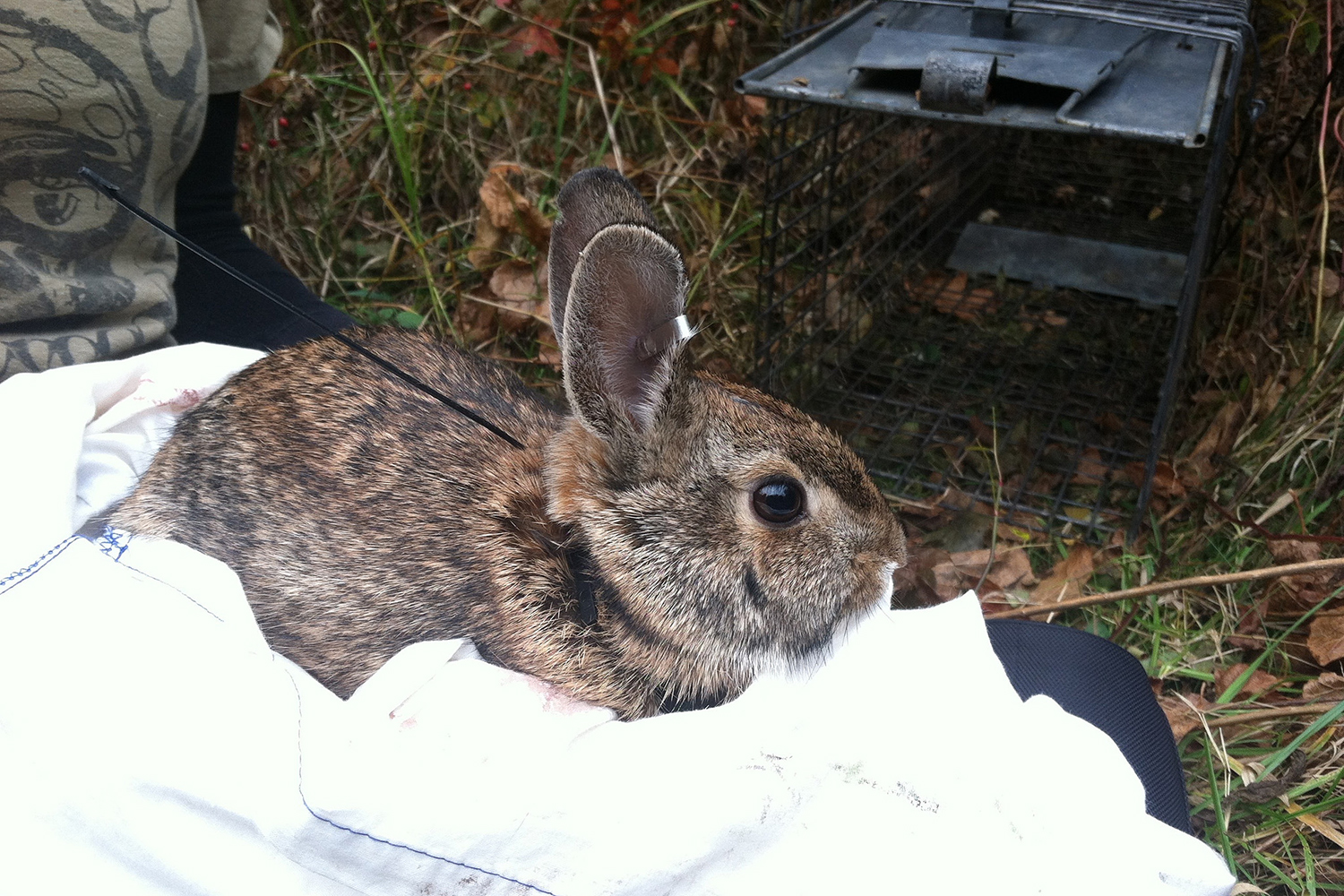By Jason M. Sheldon.
A canine searching a field for newborn cottontail rabbits sounds ominous. But if the dog is accompanied by Tracy Rittenhouse, assistant professor in the Department of Natural Resources and the Environment, then there is no cause for alarm. In the spring, Rittenhouse explored the possibility of training a canine to detect cottontail nests. The project was funded by the U.S. Department of Agriculture’s Hatch Act and the Connecticut Department of Energy and Environmental Protection through the Federal Aid in Wildlife Restoration Act.
Rittenhouse is planning to examine the reproductive patterns and nesting preferences of the two cottontail species present in Connecticut, the New England and the Eastern. The native New England cottontail has suffered population decline, now dwelling only in a few isolated areas, while the more common Eastern cottontail has sizeable numbers across the state. Her research is part of an ongoing endeavor to ensure the continued preservation of the New England cottontail.
“It’s always helpful to compare species to see how one strategy is working or not working,” Rittenhouse explains. “With the cottontails we have two very similar species and yet we have one that’s increasing and one that’s decreasing in population. Finding out those small differences that are making such a large difference in numbers is essential.”
With Ranger, a black Labrador Retriever led by handler Suzie Marlow, Rittenhouse set out across eastern Connecticut, scouring wildlife management sites, privately owned land and even the Storrs campus, where a nest was found near the Dairy Bar. Many Connecticut residents alerted Rittenhouse to nests they had found where the dog could be taken to be trained. Rittenhouse praised the helpfulness of the public in her project. “We ended up getting calls from throughout the eastern half of the state. The public was very willing, very open to letting us come on their property. I’ve always had really great success working with private landowners here in Connecticut.” NRE graduate student Jenny Kilburn also assisted Rittenhouse with conducting the study.



